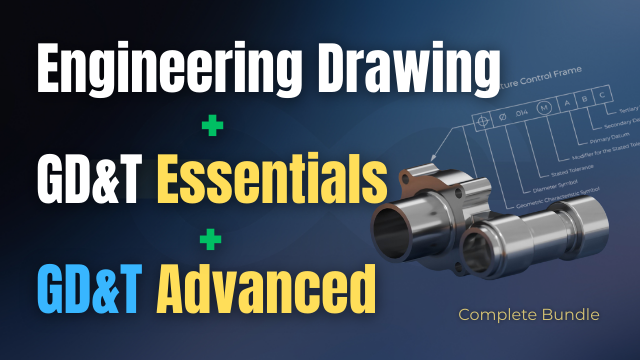-

GD&T and Technical Drawing Certification Program (Fundamentals + Advanced)
BundleMaster GD&T from basics to advanced in one complete certification pathway. Covering ISO GPS & ASME Y14.5-2018, this bundle includes fundamentals + advanced training with certification for engineers and professionals.
Purchase$400
GD&T Standards Covered by ISO GPS
The International Organization for Standardization (ISO) is a non-governmental organization that develops and publishes international standards. One of the groups of standards developed by ISO is the Geometrical Product Specifications (GPS) standards, which cover the use of geometric dimensioning and tolerancing (GD&T).
The ISO GPS standards are widely used in the manufacturing industry and are recognized as the primary GD&T standards in many countries around the world. They are regularly updated to reflect the latest developments in GD&T and to address the needs of different industries.
The ISO GPS standards have a long history, with the first standard being published in 1969. Since that time, the standards have undergone several revisions, with the most recent version being published in 2018. The ISO GPS standards are developed and maintained by the ISO Technical Committee 213, which is responsible for standardization in the field of geometrical product specifications and verification.
There are several important ISO GPS standards, including:
- ISO 1101: This standard covers the general principles of GD&T, including symbols, terms, and rules.
- ISO 5459: This standard covers the use of GD&T for size and form tolerances.
- ISO 14405: This standard covers the use of GD&T for orientation tolerances.
- ISO 14660: This standard covers the use of GD&T for location tolerances.
- ISO 14405-2: This standard covers the use of GD&T for run-out tolerances.
- ISO 16792: This standard covers the use of GD&T for surface texture.
In addition to these standards, the ISO GPS standards include several other documents that provide additional information on topics such as the use of GD&T in computer-aided design (CAD) systems and the principles of inspection and gauging.
The International Organization for Standardization (ISO) GPS standards cover the use of geometric dimensioning and tolerancing (GD&T) and are organized into several main chapters. These chapters cover the following topics:
- Introduction: This chapter provides an overview of the purpose and principles of GD&T.
- Symbols and Terms: This chapter defines the symbols and terms used in GD&T, including datum features, geometric tolerances, and modifier symbols.
- Tolerance Zones: This chapter covers the different types of tolerance zones that can be used to specify size and shape tolerances.
- Form Tolerances: This chapter discusses form tolerances, which are used to specify flatness, straightness, circularity, and cylindricity.
- Orientation Tolerances: This chapter covers orientation tolerances, which are used to specify the orientation of features on a part.
- Location Tolerances: This chapter discusses location tolerances, which are used to specify the position of features on a part.
- Runout Tolerances: This chapter covers runout tolerances, which are used to specify the amount of variation in a feature's orientation or position.
- Surface Texture: This chapter covers the use of GD&T for specifying the surface texture of a part.
- Application of GD&T: This chapter covers the practical application of GD&T, including the use of GD&T in design, inspection, and manufacturing.
In addition to these main chapters, the ISO GPS standards include several appendices that provide additional information on topics such as the use of GD&T in CAD systems and the principles of inspection and gauging.
Visit Excedify's GD&T Essentials Course or GD&T Advanced Course or purchase both in the GD&T Training and Certification Program
